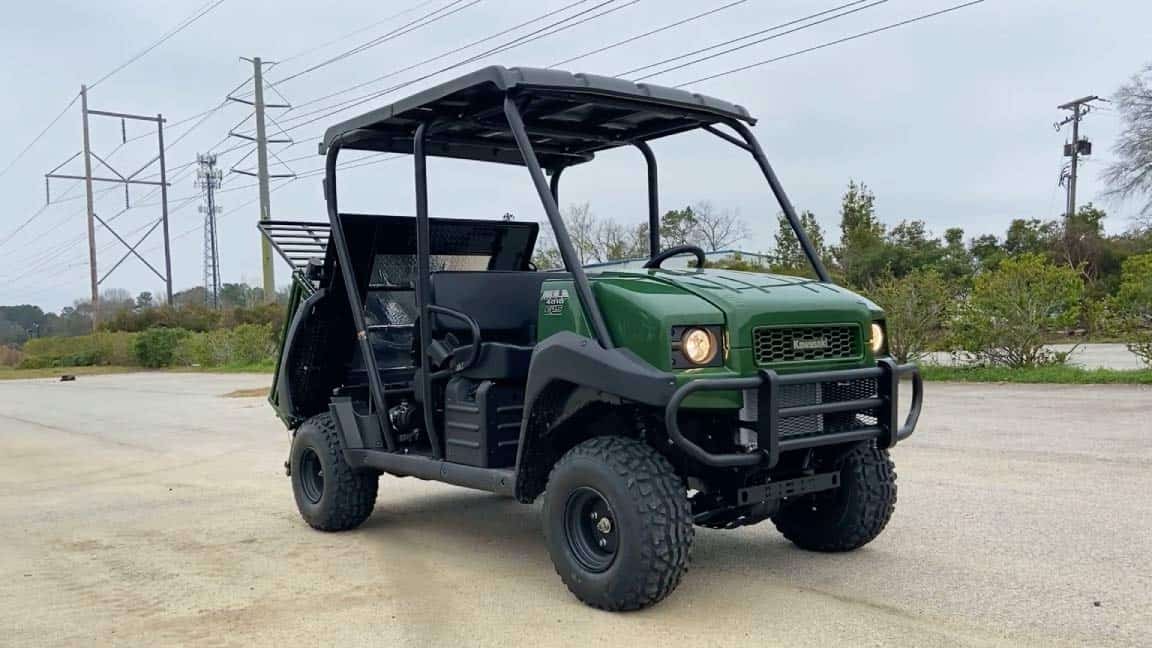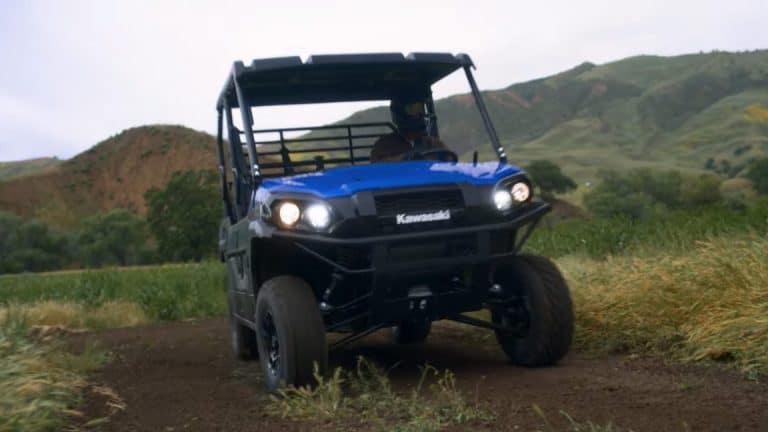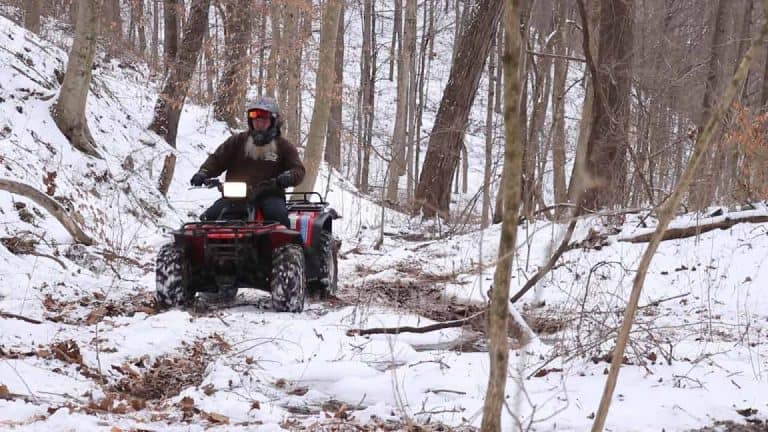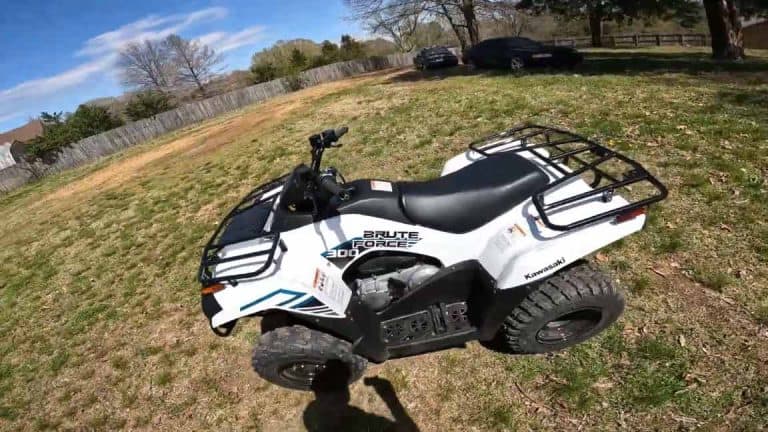10 Most Common Kawasaki Mule 4010 Problems And Best Solutions
Kawasaki Mule 4010 is a versatile utility vehicle that has gained popularity among farmers, hunters, and off-road enthusiasts. Despite its rugged design, the Mule 4010 is not immune to problems. Some of the most common issues include electrical problems, oil leaks, transmission, and brake problems.
In this article, I will discuss some of the common Kawasaki Mule 4010 Problems and their solutions so that you can keep your vehicle running smoothly and avoid costly repairs. Whether you are an experienced mechanic or a DIY enthusiast, this guide will provide you with valuable information to help you diagnose and fix problems with your Kawasaki Mule 4010.
10 Most Common Kawasaki Mule 4010 Problems
- Electrical problems, including battery issues, alternator problems, and starter malfunctions.
- Worn or damaged seals, gaskets, or oil pans can cause engine oil leaks.
- Transmission issues, such as slipping gears or delayed shifting.
- Brake problems, including poor braking performance or failure of the brake system.
- Suspension problems, including worn or damaged shocks, springs, and bushings.
- Fuel system problems include clogged fuel filters, worn fuel pumps, or leaking fuel lines.
- Engine overheating is caused by a failed water pump, clogged radiator, or thermostat problems.
- Drive belt issues, including slipping, cracking, or worn drive belts.
- Steering problems, including loose or worn steering components or issues with the steering box or tie rods.
- Excessive vibration, which imbalanced tires, worn engine or transmission mounts, or other mechanical problems can cause.
Common Kawasaki Mule 4010 Problems And Solutions
Solution number 1: Electrical problems
Electrical problems are among the most common issues with the Kawasaki Mule 4010. Some of the common electrical problems and their solutions include:
- Battery issues: If the battery is dead, it will not start the engine. Check the battery connections and make sure they are clean and tight. If the battery is more than a few years old, replace it with a new one.
- Alternator problems: If the alternator is not charging the battery, the vehicle will run for a short time before dying. Check the alternator belt and make sure it is tight. If the alternator is faulty, replace it.
- Starter malfunctions: If the starter motor is not turning over, the engine will not start. Check the starter connections and make sure they are clean and tight. If the starter is faulty, replace it.
To diagnose electrical problems, use a multimeter to measure voltage and current in the electrical system. If you are unfamiliar with electrical systems, it is recommended to seek the help of a professional mechanic.
Solution number 2: Worn or damaged seals
Worn or damaged seals are a common cause of kawasaki mule 4010 problems engine oil leaks in the Kawasaki Mule 4010. Some of the common oil leak areas and their solutions include:
- Valve cover gaskets: If oil leaks from the valve cover, the gaskets may be worn or damaged. Replace the gaskets to stop the leak.
- Crankshaft seals: If oilcake from the engine’s front or rearmed, the crankshaft seals may be worn or damaged. Replace the seals to stop the leak.
- Oil pan gasket: If oil leaks from the engine’s bottom, the oil pan gasket may be worn or damaged. Replace the gasket to stop the leak.
Inspect the engine and transmission for signs of oil residue or drips to diagnose oil leaks. Clean the surface of the engine and transmission to make it easier to spot leaks. If you are unfamiliar with engine seals, it is recommended to seek the help of a professional mechanic.
Solution number 3: Transmission issues
Transmission issues are another common problem with the Kawasaki Mule 4010. Some of the common transmission problems and their solutions include:
- Slipping gears: If the gears are slipping, the transmission fluid level may be low ,or the fluid may be dirty. Check the fluid level and condition, and replace the fluid if necessary.
- Delayed shifting: If the gears are not shifting smoothly or are delayed, the transmission may be low on fold, or the shift cable may be damaged. Check the fluid level and condition, and replace the fluid if necessary. Check the shift cable for damage and replace it if necessary.
To diagnose transmission problems, inspect the fluid level and condition, and listen for unusual noises when shifting gears. If you are unfamiliar with transmissions, it is recommended to seek the help of a professional mechanic.
Solution number 4: Brake problems
Here is a table summarizing the common brake problems in the Kawasaki Mule 4010 and their solutions:
| Problem | Solution |
| Poor Braking Performance | Check the brake pads for wear and replace them if necessary. Check the brake calipers for leaks and replace them if necessary. Check the brake lines for leaks and replace them if necessary. |
| Failure of the brake system | Check the brake master cylinder for leaks and replace it if necessary. Check the brake booster for leaks and replace it if necessary. Check the brake lines for leaks and replace them if necessary. |
To diagnose brake Kawasaki mule 4010 problems, inspect the brake components for signs of wear or damage, and check the fluid level in the brake master cylinder. If you are unfamiliar with brake systems, it is recommended to seek the help of a professional mechanic.
Solution number 5: Suspension problems
Various factors, such as worn-out components, improper alignment, and lack of maintenance, can cause suspension problems in the Kawasaki Mule 4010. Some common suspension issues include:
- Sagging or bouncy ride: This can be caused by worn-out shocks, springs, or improper tire pressure. Solution: Replacing the worn-out components and maintaining proper tire pressure can help fix this issue.
- Uneven tire wear: This can be caused by improper alignment or uneven suspension. Solution: Proper alignment of the wheels and suspension components can help fix this issue.
- Poor handling: This can be caused by worn-out hocks or improper alignment. Solution: Replacing worn-out hocks and maintaining proper alignment can help improve handling.
- Noise from suspension: This can be caused by worn-out bushings or loose components. Solution: Replacing worn-out components and tightening loose parts can help fix this issue.
It is important to regularly maintain and inspect your Kawasaki Mule 4010’s suspension system to ensure its longevity and performance. If you need help fixing suspension problems, it is recommended to consult a professional mechanic.
Solution number 6: Fuel system problems include clogged fuel filters
Fuel system problems in the Kawasaki mule 4010 problems can result in poor engine performance and reduced fuel efficiency. Some common fuel system issues include:
- Clogged fuel filters: A clogged fuel filter can restructure flower to the engine, leading to reduced performance and possible engine stalls. Solution: Replacing the clogged fuel filter can help resolve this issue.
- Fuel leaks: Fuel leaks can be caused by damaged or worn-out worn-outers or connections. Solution: Replacing the damaged fuel lines or connections can help resolve this issue.
- Dirty fuel tank: A dirty fuel tank can clog fuel filters and reduce engine performance. Solution: Cleaning the fuel tank and replacing clogged fuel filters can help resolve this issue.
- Stale fuel: Stale fuel can cause engine performance issues, including reduced power and increased emissions. Solution: Draining the stale fuel and replacing it with fresh fuel can help resolve this issue.
- Fuel pump issues: Fuel pump issues can cause reduced fuel pressure and engine performance problems. Solution: Replacing the faulty fuel pump can help resolve this issue.
Regular fuel system maintenance, including checking for leaks, cleaning the fuel tank, and replacing fuel filters, can help prevent these issues. If you need help fixing the fuel system problems, it is recommended to consult a professional mechanic.
Solution number 7: Excessive vibration
Excessive vibration in the Kawasaki Mule 4010 can be caused by imbalanced wheels or tires, worn-out drive components, damaged engine or suspension components, and misaligned driveling driveline solutions to excessive vibration include:
- Check for loose or damaged engine or suspension components: Tighten or replace any damaged components to resolve this issue.
- Check for imbalanced wheels or tires: Balance the wheels and tires to reduce vibration.
- Check for worn-out worn-opponents: Replace worn-out such as U-joints, drive shafts, or bearings to resolve this issue.
- Check for worn-out, unworn-transmission mounts: Replace any worn-out vibration.
- Check for damaged or misaligned driveline: Align or replace damaged components to resolve this issue.
It is important to diagnose the source of the excessive vibration to a appropriate solution. If you need help fixing the excessive vibration, it is recommended to consult a professional mechanic.
Solution number 8: Engine overheating is caused by a failed water pump
Engine overheating in the Kawasaki Mule 4010 problems can have several causes, including a failed water pump. Some common solutions to engine overheating include:
- Check the water pump: A failed water pump can prevent coolant from circulating through the engine, causing overheating. Solution: Replace the failed water pump to resolve this issue.
- Check the radiator: A clogged or damaged radiator can reduce the engine’s ability to dissipate heat. Solution: Clean or replace the radiator to resolve this issue.
- Check the thermostat: A stuck or failed thermostat can prevent proper coolant flow, causing overheating. Solution: Replace the thermostat to resolve this issue.
- Check the coolant level: Low coolant levels can cause overheating. Solution: Fill the coolant to the proper level to resolve this issue.
- Check for leaks: Leaks in the coolant system can cause low coolant lover heater heating. Solution: Repair any leaks to resolve this issue.
It is important to diagnose the source of the engine often to provide the appropriate solution. If you need help fixing the engine overheating, it is recommended to consult a professional mechanic.
Solution number 9: Drive belt issues
Drive belt issues in the Kawasaki mule 4010 problems can cause reduced performance and other problems. Some common drive belt issues and their solutions include:
- Loose drive belt: A loose drive belt can slip, reducing engine performance and causing excessive wear. Solution: Tighten the drive belt to resolve this issue. Worn-out-out drive belt: A worn-out belt can slip, reduce engine performance, and cause other issues. Solution: Replace the worn-out drive belt to resolve this issue.
- Misaligned drive belt: A misaligned drive belt can cause excessive wear and reduce engine performance. Solution: Align the drive belt to resolve this issue.
- Damaged drive belt: A damaged drive belt can cause excessive wear and reduce engine performance. Solution: Replace the damaged drive belt to resolve this issue.
- Tensioner issues: A failed or worn-out tensioner can cause the drive belt to slip or become misaligned. Solution: Replace the tensioner to resolve this issue.
Regular maintenance of the drive belt, including checking for proper tension, inspecting for wear, and replacing damaged belts, can help prevent these issues from occurring. If you need help fixing the drive belt issues, it is recommended to consult a professional mechanic.
Solution number 10: Steering problems
Here is a table summarizing the common steering problems in the Kawasaki Mule 4010 and their solutions:
| Problem | Solution |
| Loose steering components | Tighten any loose components |
| Worn-out steering components | Replace any worn-out components |
| Misaligned steering components | Align the components |
| Power steering issues | Check and repair the power steering system |
| Steering linkage issues | Check and repair the steering linkage |
It is important to diagnose the source of the steering kawasaki mule 4010 problems to provide the appropriate solution. If you need help fixing the steering problems, it is recommended to consult a professional mechanic.
How To Fix It Kawasaki Mule 4010 Pump Problems
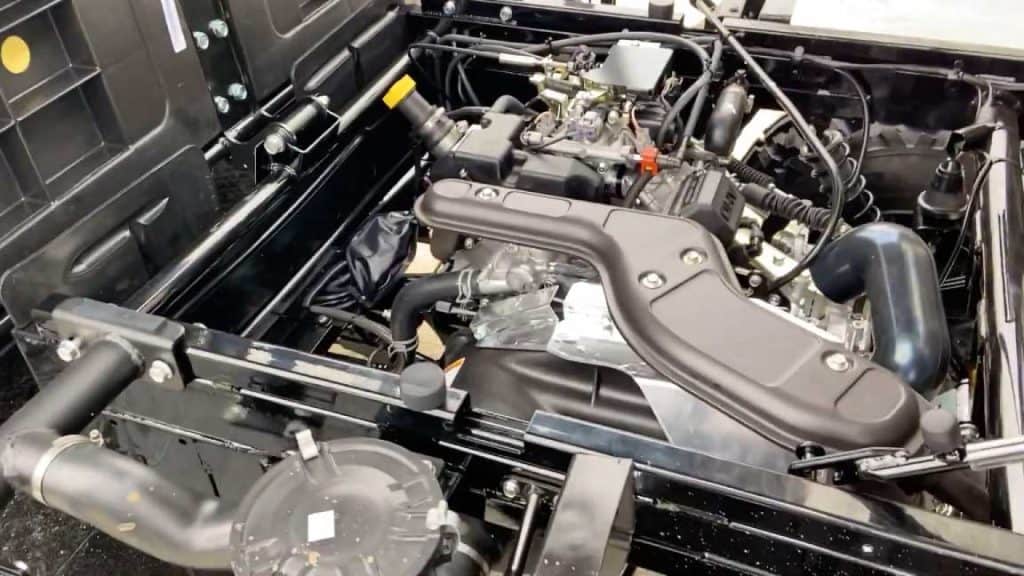
Here is a table summarizing the common pump problems in the Kawasaki Mule 4010 and their solutions:
| Problem | Solution |
| Clogged pump | Clean the pump |
| Worn out pump | Replace the worn-out pump |
| Leaks in the pump | Repair any leaks |
| Faulty pump | Replace the faulty pump |
| Improper pump installation | Properly install the pump |
It is important to diagnose the source of the pump problems to provide the appropriate solution. If you need help fixing the pump problems, it is recommended to consult a professional mechanic.
How To Fix kawasaki mule 4010 dfi problems
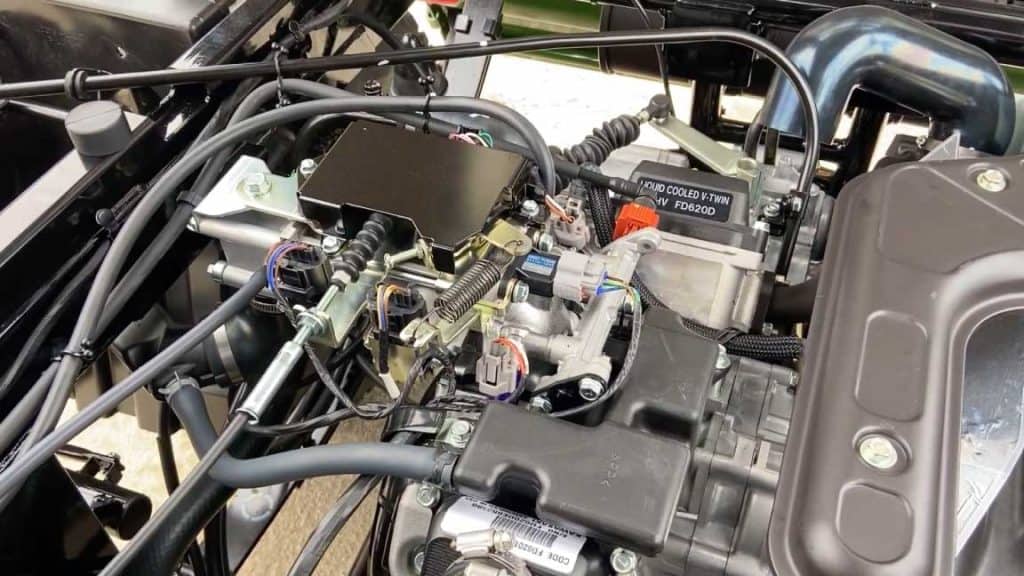
The Kawasaki Mule 4010 DFI (Digital Fuel Injection) system can experience various problems, which can affect the performance and operation of the vehicle. Some common DFI problems and their solutions include:
- Clogged fuel injectors: These can reduce performance and cause other issues. Solution: Clean the fuel injectors to resolve this issue.
- Faulty fuel injectors: Faulty fuel injectors can cause a variety of issues, including reduced performance and malfunctions. Solution: Replace the faulty fuel injectors to resolve this issue.
- Fuel pressure issues: Fuel pressure issues can cause a variety of issues, various reduced performance, and malfunctions. Solution: Check and repair the fuel pressure system to resolve this issue.
- Air/fuel mixture issues: Issues with the air/fuel mixture can cause a variety of issues, various diced performance, and malfunctions. Solution: Check and adjust the air/fuel mixture to resolve this issue.
- DFI control module issues: Issues with the DFI control module can cause various issues, including reduced performance and malfunctions. Solution: Check and repair the DFI control module to resolve this issue.
It is important to diagnose the source of the DFI problems to provide the appropriate solution. If you need help fixing the DFI problems, it is recommended to consult a professional mechanic.
Conclusion
The Kawasaki Mule 4010 is a durable and reliable utility vehicle for various applications. However, like any complex machine, it can experience various problems affecting its performance and operation. The most common problems include suspension, fuel system, excessive vibration, engine overheating, drive belt, steering, and DFI problems.
Understanding these common issues and the appropriate solutions can help keep your Kawasaki Mule 4010 problems running smoothly and help you avoid costly repairs. If you need help with diagnosing or repairing a problem with your Mule 4010, it is recommended to consult a professional mechanic.
Frequently Asked Questions
What is a kawasaki mule 4010 problems?
A Kawasaki Mule 4010 problem refers to any issue or malfunction experienced with the utility vehicle. This can range from starting, transmission, suspension, and electrical problems to engine issues.
What Are Some Common Problems with The Kawasaki Mule 4010?
Some common problems with the Kawasaki Mule 4010 include suspension, fuel system, excessive vibration, engine overheating, drive belt, steering, and DFI problems.
What Causes Excessive Vibration In The Kawasaki Mule 4010?
Excessive vibration in the Kawasaki Mule 4010 can be caused by several factors, including worn-out or damaged suspension components, improperly balanced wheels, or engine problems.
How can I fix the engine overheating in my Kawasaki Mule 4010?
A failed water pump can cause engine overheating in the Kawasaki Mule 4010. To fix this issue, you should replace the water pump with a new one.
What should I do if I have driven belt issues with my Kawasaki Mule 4010?
If you have driven belt issues with your Kawasaki Mule 4010, you should check the drive belt for signs of wear and tear, such as cracks or fraying. If the drive belt is worn out, you should replace it with a new one.
How can I fix the starting problem in my Kawasaki Mule 4010?
Check the battery, starter, and solenoid connections. You can also clean the battery terminals and check the starter motor for any damage.

